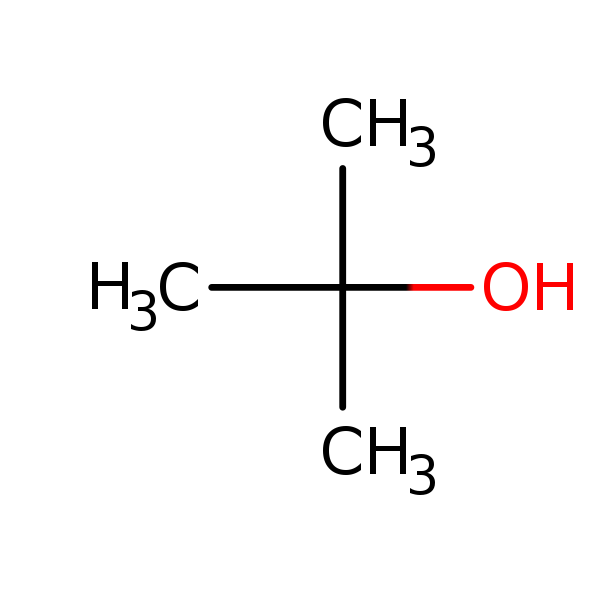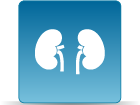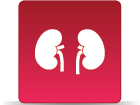tert-Butyl Alcohol (tBA)
CASRN 75-65-0 | DTXSID8020204
- Toxicological Review (PDF) (156 pp, 2.3 MB, about PDF)
- IRIS Executive Summary (PDF) (7 pp, 302.7 KB, about PDF)
- Supplemental Information on the IRIS Toxicological Review of Tert-Butyl Alcohol
IRIS Toxicological Review of Tert-Butyl Alcohol (TBA) (Interagency Science Discussion Draft, 2020)
On this page:
Alert
Notice - This site contains archived material(s)
Archive disclaimer
Archived files are provided for reference purposes only.
The file was current when produced, but is no longer maintained and may now be outdated.
Persons with disabilities having difficulty accessing archived files may contact the IRIS Webmaster for assistance.
Please use the contact us form if you need additional support.
Overview
In August 2021, EPA finalized the IRIS assessment of tert-butyl alcohol (TBA). The Toxicological Review was reviewed internally by EPA and by other federal agencies and White House Offices after public release in June 2017. Consistent with the May 2009 IRIS assessment development process, all written comments on IRIS assessments submitted by other federal agencies and White House Offices are made publicly available. Accordingly, interagency comments and the interagency science discussion materials provided to other agencies, including interagency review drafts of the IRIS Toxicological Review of Tert-Butyl Alcohol (TBA) are posted on this site.Background
tert-Butyl Alcohol (tBA) is used as a solvent; as a denaturant for ethanol and several other alcohols; in the manufacture of flotation agents, fruit essences, and perfumes; as an octane booster in gasoline; as a dehydrating agent; and as a chemical intermediate in the manufacture of methyl methacrylate. tBA's production for industrial uses may result in its direct release to the environment through various waste streams. tBA is also a likely degradation product of methyl tert-butyl ether (MTBE). Probable routes of human exposure to tBA include inhalation, ingestion, and skin or eye contact.| Date | Description |
|---|---|
| Aug 2013 | EPA released preliminary assessment materials (draft literature searches and associated search strategies, evidence tables and exposure response arrays) for discussion at an IRIS Public Science Meeting. |
| Dec 2013 | EPA discussed tert-butanol at the December 2013 IRIS public science meeting. |
| Sep 2014 | EPA sent an interagency science consultation draft for review and comment. |
| May 2016 | EPA released the public comment draft for public review and comment. |
| Jun 2016 | EPA convened a public science meeting June 29-30, 2016 to discuss the public comment draft. |
| Jun 2017 | EPA released the external review draft and charge to reviewers prior to the public peer review meeting.[SAB FR Notice Jun 16, 2017] |
| Jul 2017 | EPA's Science Advisory Board (SAB) hosted a public teleconference to discuss the draft assessment. |
| Aug 2017 | EPA's SAB hosted a 2-day public meeting on August 15-17, 2017, to discuss the draft assessment. |
| Feb 2019 | EPA's SAB released a final report of their review of the draft IRIS assessment. |
| Jul 2020 | EPA submitted the revised interagency science discussion draft for final Agency and Interagency review. |
| Aug 2021 | EPA posts the final report IRIS Toxicological Review of Tert-Butyl Alcohol (TBA) and released the interagency science discussion draft and comments to the IRIS database. |
Status
Now that the interagency review draft has been completed and finalized, the TBA assessment has been loaded into the IRIS Web site and Database.Download(s)
This download(s) is distributed solely for the purpose of pre-dissemination peer review under applicable information quality guidelines. It has not been formally disseminated by EPA. It does not represent and should not be construed to represent any Agency determination or policy.
- IRIS Toxicological Review of Tert-Butyl Alcohol (Interagency Science Discussion Draft) (PDF) (144 pp, 2.4 MB, about PDF)
- IRIS Toxicological Review of Tert-Butyl Alcohol Supplemental Information (Interagency Science Discussion Draft) (PDF) (129 pp, 3.6 MB, about PDF)
- EPA's Response to Select Interagency Comments on the Assessment for Tert-Butanol (Jul 2021) (PDF) (4 pp, 158.2 KB, about PDF)
- 1. CDC/NIOSH Tert-Butyl Alcohol IASD Comments Aug 2020 (PDF) (1 pp, 159.2 KB, about PDF)
- 2. OMB Tert-Butyl Alcohol IASD Comments Aug 2020 (PDF) (4 pp, 123.0 KB, about PDF)
If you have a disability and the format of any material on our web pages interferes with your ability to access the information, please reach out to us using the Contact Us about IRIS form for assistance. To enable us to respond in a manner most helpful to you, please indicate the nature of the accessibility problem, the web address of the requested material, your preferred format in which you want to receive the material (electronic format (ASCII, etc.), standard print, large print, etc.), and your contact information.
Document Related Link(s)
- IRIS Toxicological Review of Tert-Butyl Alcohol (TBA) (Preliminary Assessment Materials, 2013)
- IRIS Toxicological Review of Tert-Butyl Alcohol (TBA) (Public Comment Draft, 2016)
- IRIS Toxicological Review of Tert-Butyl Alcohol (TBA) (Interagency Science Consultation Draft, 2014)
- IRIS Toxicological Review of Tert-Butyl Alcohol (TBA) (External Review Draft, 2017)
Related Links
Critical Effect Systems
Chemical Structure for
tert-Butyl Alcohol (tBA)

Synonyms
- NCI-C55367
- TBA
- arconol
- t-butanol
- t-butyl alcohol
- t-butyl hydroxide
- tBA
- tert-butanol
- tert-butyl alcohol
- tert-butylalcohol
- tertiary carbinol
- trimethyl carbinol
- trimethyl methanol
- trimethylcarbinol
- trimethylmethanol
- 1,1-dimethylethanol
- 2 methylpropan-2-ol
- 2 metilpropan-2-ol
- 2-Propanol
- 2-methyl-
- 2-methyl-2-propanol
- 2-methylpropan-2-ol
- 2-methylpropane-2-ol



